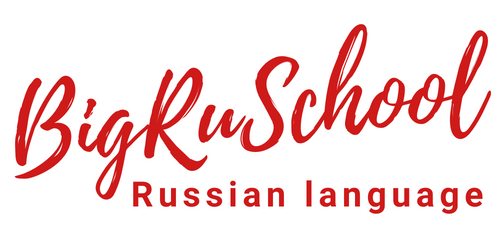
GET YOUR FREE LESSON
By clicking this button I give my consent to the processing of my personal data in accordance with the following rules.
We use cookies to provide the best site experience.
Ok, don't show again
Russian courses
for TORFL Exams
for TORFL Exams
Native professional teachers.
Teaching since 1997. Located in Moscow, Russia.
Teaching since 1997. Located in Moscow, Russia.
GET YOUR PERSONAL
FREE LESSON
FREE LESSON
By clicking this button I give my consent to the processing of my personal data in accordance with the following rules.
Russian courses
For TORFL Exams
Native professional teachers.
Teaching since 1997. Located in Moscow, Russia.
Teaching since 1997. Located in Moscow, Russia.

GET YOUR FREE LESSON
By clicking this button I give my consent to the processing of my personal data in accordance with the following rules.
Test your Russian
and upgrade your life
TORFL preparation courses with Russian teachers with considerable experience in successful exam preparation.
It is an official international exam that confirms the language proficiency level established in Russian federal legislation.
We provide exam preparation courses for foreign students whether they want to check their communication skills, obtain the Russian citizenship or enter higher education institutions.
We provide exam preparation courses for foreign students whether they want to check their communication skills, obtain the Russian citizenship or enter higher education institutions.
Levels for TORFL preperationThe TORFL test consists of 6 levels that are matched to the Common European Framework of Reference for Languages: Learning, Teaching, Assessment (CEFR). Level A1 - Elementary (TEL) Proves initial competence in Russian when a learner can satisfy elementary communicative needs in a limited number of everyday survival situations (ask and answer simple questions, respond to simple statements on very familiar topics) on the condition that the other person talks slowly and clearly, repeats or rephrases. A learner has a basic vocabulary range of isolated words and phrases related to particular situations (780 items minimum). Level A2 - Basic (TBL) Proves standard competence in Russian when a learner can satisfy basic communicative needs in a limited number of predictable survival situations in everyday life, culture, routine tasks (greet people, respond to invitations, discuss future plans and make arrangements to meet, make and accept offers, ask for basic information, etc.). A learner's vocabulary range contains the most common Russian words, basic sentence patterns and short memorized phrases, including some international words of everyday language(1300 items minimum). Required to obtain the Russian citizenship. Level B1 - First Certification (TORFL-I) Indicates an intermediate level of language competence in everyday, cultural, educational and professional areas of life (describe experiences/ dreams, give reasons and explanations for opinions and plans, narrate a story, etc.). A learner has enough vocabulary to express more complex ideas on predictable topics as well as unfamiliar situations (2300 items minimum). Level sufficient to enter higher education institutions. Level B2 - Second certification (TORFL-II) Indicates a high level of competence in Russian when a learner can communicate in a wide range of language situations in cultural, educational and professional spheres with a degree of fluency and self-correction without making mistakes which lead to misunderstanding (provide arguments, give advantages and disadvantages, express an opinion or an idea on abstract or cultural topics, etc.). A learner has quite an extensive vocabulary, but may face with some difficulty understanding or using less common Russian words, phrases and expressions (10000 items minimum, active ability to use 6000 of them). Level C1 - Third certification (TORFL-III) Indicates a high level of language in all communicative contexts when a learner can interact with native Russian speakers fluently and spontaneously, recognize a wide range of idiomatic expressions or changes in style, maintain a high degree of language accuracy almost without making any mistakes. A learner has a significant vocabulary including a range of more complex formulations, a considerable degree of slang and idiomatic expressions (12000 items minimum, active ability to use 7000 of them). Level C2 - Fourth certification (TORFL-IV) Proves language competence close to a native Russian speaker when a learner is able to communicate very fluently and particularly precisely at fast native speed, differentiating all shades of meaning. A learner has a significant vocabulary including a range of more complex formulations, a considerable degree of slang, idiomatic expressions and terminology (20000 items minimum). BigRuSchool approach for TORFL preparation: - Individual online lessons specifically designed to prepare students for the test. - We use an integrated approach that includes the development of all four language skills measured in the TORFL test (writing, reading, speaking, listening) along with grammar and vocabulary in a multi choice format. - You will have real test tasks practice with Russian teachers who have considerable experience in successful TORFL preparation. |
Online Russian Test
Take it for free to determine your current level of Russian
FAQ about Russian courses
Landi Emilio
How long does it take to prepare for the TORFL test?
BigRuSchool
It takes about 120 academic hours to complete one level. If you ALREADY have the required level for the test and you need to prepare for the exam format, we recommend 32 academic hours for A1.1 - B1 levels and 52 academic hours for B2 - C2 levels.
Frank Alexander
Who needs to prepare for TORFL?
BigRuSchool
TORFL enables you to study in Russian universities, allows you to work in Russia, provides the opportunity to assess your skills in Russian.
Gustafsson Ulrika
How will my lessons be delivered?
BigRuSchool
Lessons will be delivered via Zoom, a great platform for remote learning that works from any desktop, tablet or phone. You just need your device and a stable internet connection.
Butler Karen
What is a trial lesson?
BigRuSchool
It's an initial meeting with your teacher. You'll be able to discuss your learning goals and a structure of future lessons.
Charbonneau Chantal
Will I get a certificate at the end of the course?
BigRuSchool
We provide you with a certificate of completion with the indication of your level of Russian according to the Common European Framework of Reference for Languages (CERF).
To receive the official TORFL certificate you should successfully pass the TORFL exam.
To receive the official TORFL certificate you should successfully pass the TORFL exam.
GET YOUR FREE LESSON
By clicking this button I give my consent to the processing of my personal data
in accordance with the following rules.
in accordance with the following rules.




